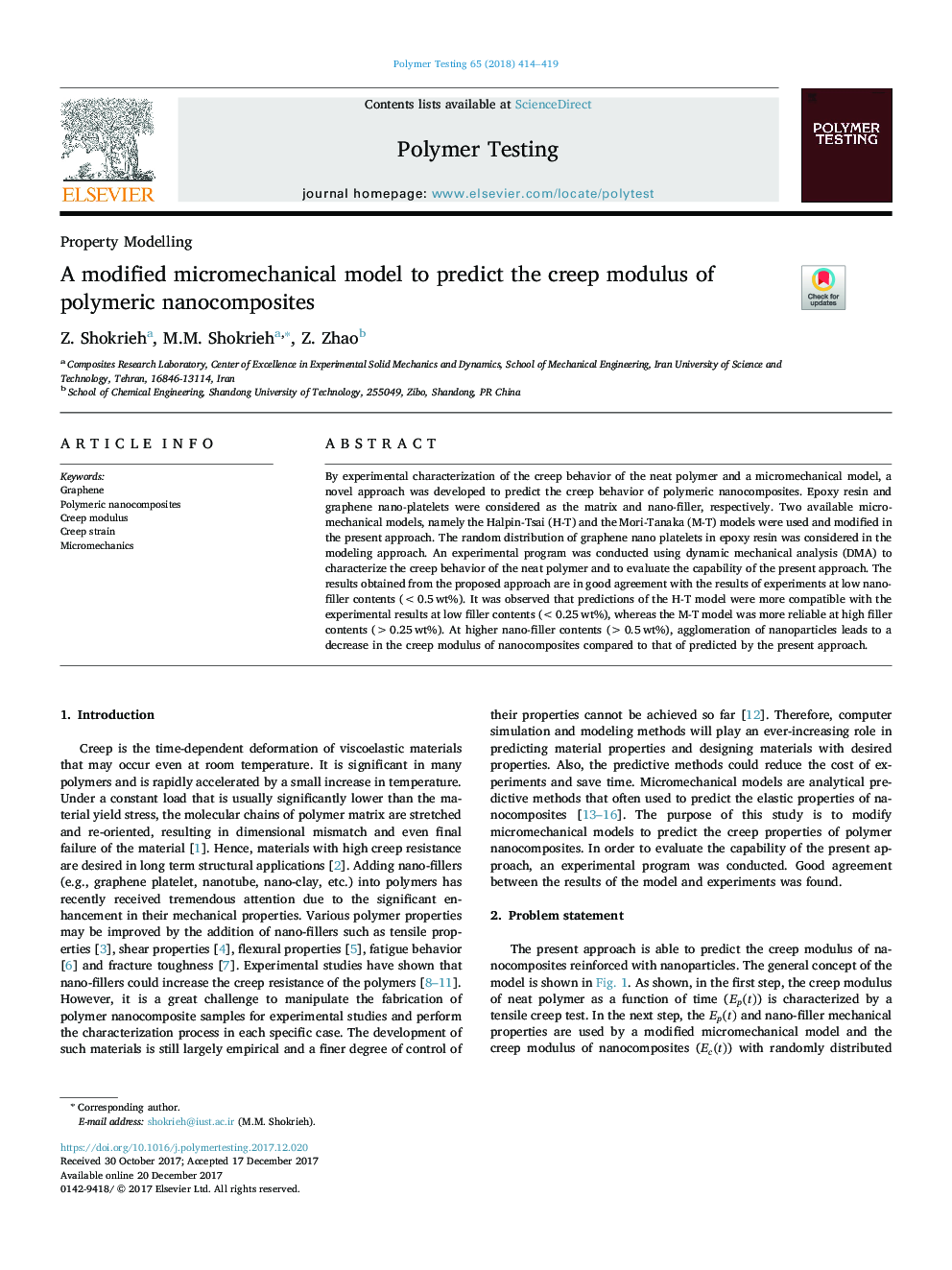| Article ID | Journal | Published Year | Pages | File Type |
|---|---|---|---|---|
| 7825516 | Polymer Testing | 2018 | 6 Pages |
Abstract
By experimental characterization of the creep behavior of the neat polymer and a micromechanical model, a novel approach was developed to predict the creep behavior of polymeric nanocomposites. Epoxy resin and graphene nano-platelets were considered as the matrix and nano-filler, respectively. Two available micromechanical models, namely the Halpin-Tsai (H-T) and the Mori-Tanaka (M-T) models were used and modified in the present approach. The random distribution of graphene nano platelets in epoxy resin was considered in the modeling approach. An experimental program was conducted using dynamic mechanical analysis (DMA) to characterize the creep behavior of the neat polymer and to evaluate the capability of the present approach. The results obtained from the proposed approach are in good agreement with the results of experiments at low nano-filler contents (<0.5â¯wt%). It was observed that predictions of the H-T model were more compatible with the experimental results at low filler contents (<0.25â¯wt%), whereas the M-T model was more reliable at high filler contents (>0.25â¯wt%). At higher nano-filler contents (>0.5â¯wt%), agglomeration of nanoparticles leads to a decrease in the creep modulus of nanocomposites compared to that of predicted by the present approach.
Related Topics
Physical Sciences and Engineering
Chemistry
Organic Chemistry
Authors
Z. Shokrieh, M.M. Shokrieh, Z. Zhao,
